Medications for Reducing Alcohol Cravings
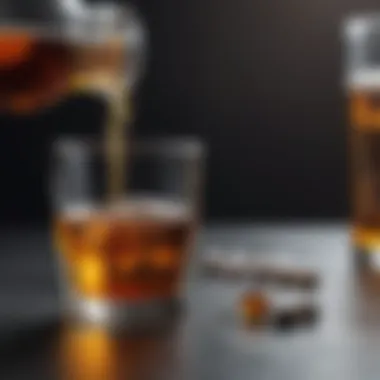
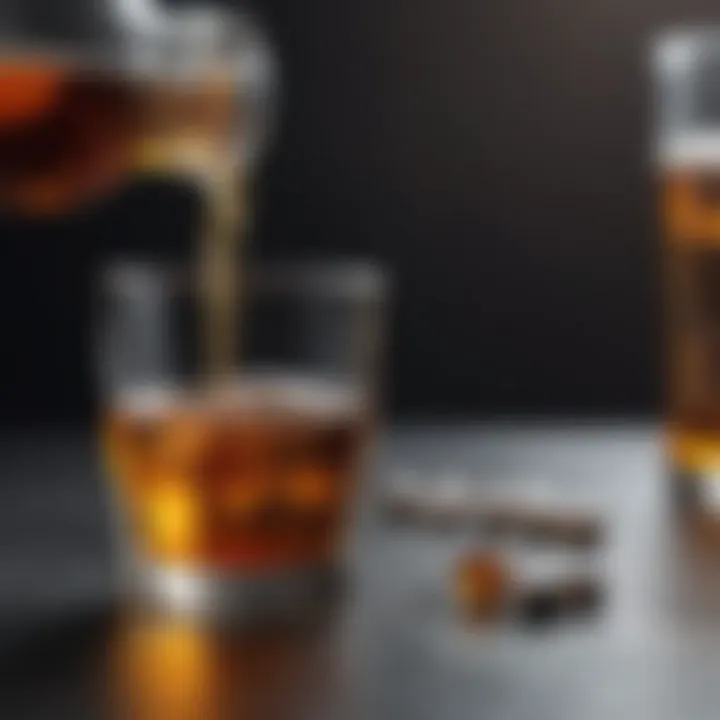
Intro
Alcohol consumption has long been a topic of immense importance in both public health discussions and individual patient care. The tendency toward excessive drinking often leaves individuals caught in a cycle of cravings that can be brutally difficult to overcome. Thus, pharmacological interventions aimed at mitigating these cravings have garnered significant attention. Understanding the options available not only aids those struggling with alcohol dependency but also equips healthcare professionals with crucial tools to navigate this challenging landscape.
This article delves into the medications that target alcohol cravings, unpacking their mechanisms of action, efficacy based on current studies, and their roles within comprehensive treatment frameworks. By illuminating these aspects, the goal is to provide a robust resource for students, researchers, and working professionals alike who are dedicated to the realm of addiction treatment.
Research Context
Background and Rationale
The rising rates of alcohol misuse across various demographics highlight an urgent need for effective treatment options. It’s no secret that alcohol use disorder can devastate lives, overshadowing personal achievements and eroding the fabric of families. While many grapple with the desire to reduce or cease alcohol consumption, cravings often emerge as formidable barriers.
The rationale behind exploring pharmacological avenues lies in comprehensive treatment approaches that combine both medication and behavioral therapies. These pharmacological measures offer a scientific foundation for managing cravings, potentially lowering relapse rates and improving patient outcomes.
Literature Review
A host of studies has illuminated various pharmacological agents in combating alcohol cravings. Disulfiram, naltrexone, and acamprosate are among the most frequently researched.
- Disulfiram disrupts the metabolism of alcohol, leading to unpleasant reactions if alcohol is consumed, which fosters abstinence.
- Naltrexone functions primarily by blocking opioid receptors, thereby diminishing the reinforcing effects of alcohol.
- Acamprosate stabilizes neurotransmission disrupted by chronic alcohol use, promoting a return to balance in brain function.
While some evidence advocates the use of these medications, results vary depending on individual circumstances. Factors such as patient adherence, the presence of co-occurring mental health disorders, and environmental influences all play notable roles in the effectiveness of these pharmacotherapies.
"Understanding the individual patient's context and treatment preferences is essential in tailoring effective pharmacological strategies for alcohol craving management."
The existing literature strongly advocates for a personalized approach in treating alcohol dependence, emphasizing the importance of combining medication with psychosocial interventions. As each patient's journey is unique, a deep understanding of not just the pharmacological options, but also the broader contexts in which they operate, proves invaluable.
Understanding Alcohol Cravings
Alcohol cravings play a crucial role in the broader context of addiction and recovery. Understanding these cravings not only informs the pharmacological approaches to managing them but also equips healthcare providers with the necessary knowledge to address cases more holistically. It’s essential to grasp the nature of alcohol cravings as they directly influence a person's behavior and ability to adhere to treatment. Without shedding light on what triggers these cravings, we run the risk of overlooking significant aspects of addiction treatment and recovery-support strategies.
Defining Alcohol Cravings
Defining alcohol cravings is fundamental to this discussion. Simply put, alcohol cravings can be described as an intense desire or an overwhelming urge to consume alcohol. These cravings can be fleeting or persistent and can become more pronounced during high-stress situations or when exposed to environmental cues associated with previous drinking behaviors. It is not just a matter of wanting a drink; cravings often carry an emotional weight, frequently linked to past experiences and social engagements.
When discussing cravings, it’s helpful to differentiate between two types: physical cravings, which involve withdrawal symptoms and physical discomfort when not consuming alcohol, and psychological cravings, which delve into emotional and mental desires tied to alcohol. Understanding these nuances helps tailor interventions aimed at mitigating these urges.
Psychological and Physiological Factors
Delving deeper, both psychological and physiological factors substantially contribute to the development of alcohol cravings. On the psychological side, various triggers such as stress, social situations, and even specific places can provoke strong urges to drink. Emotional states, like sadness or anxiety, can also lead individuals back to thinking about a drink as a form of coping.
In parallel, physiological factors cannot be ignored. An individual's biology—genetics, metabolism, and even their general health—plays a role in how cravings manifest. Research shows that the brain's reward system, when impacted by alcohol, adapts over time, making the act of consuming alcohol more tantalizing. This means that for some, the cycle of craving continues as the body's dependence deepens. One cannot consider alcohol cravings solely from a mental standpoint; it’s a complex interplay of mind and body.
Impact on Behavior and Decision Making
The influence of alcohol cravings on behavior and decision-making is profound. When a person experiences cravings, their ability to make rational decisions often declines. The immediate desire can overshadow long-term goals, increasing the risk of relapse among those in recovery.
For instance, in a social setting where alcohol is present, someone may find it exceedingly difficult to resist that pull, leading to choices against their better judgment. This is not merely about willpower; cravings can diminish cognitive functioning, clouding the capacity to weigh options effectively.
“Understanding alcohol cravings is not just an academic exercise; it's the foundation for effective treatment strategies.”
Furthermore, the urgency of cravings can create a cycle of guilt, shame, and self-recrimination, further complicating recovery efforts. This cycle emphasizes the necessity for comprehensive approaches addressing the underlying causes of cravings rather than focusing solely on the symptoms themselves.
Clearly, comprehensively understanding alcohol cravings—both what they are and what drives them—is pivotal in developing effective pharmacological strategies to help those struggling with alcohol use. Only with a firm grasp of these dynamics can clinicians and researchers design better interventions and therapeutic frameworks moving forward.
Pharmacological Interventions
Addressing the complex issue of alcohol cravings requires not only understanding its psychological underpinnings but also identifying effective treatments. Pharmacological interventions represent a crucial element in managing these cravings, often complementing psychological therapies and support groups. By utilizing specific medications tailored to target the neurochemical processes associated with alcohol craving, healthcare professionals can offer patients a massively significant, multi-faceted approach to recovery.
These medications, when applied thoughtfully, can help mitigate withdrawal symptoms and reduce the compulsion to drink. Importantly, pharmacological treatments are not a one-size-fits-all; they need to be personalized based on individual needs, patient history, and potential interaction with other substances. The conversation about pharmacological interventions goes beyond just prescribing pills; it involves a nuanced understanding of each patient's unique journey towards sobriety.
Overview of Available Medications
In recent years, several medications have gained recognition in the pharmacological arsenal against alcohol cravings. Here are some of the most frequently used agents:
- Naltrexone: This medication acts as an opioid receptor antagonist, significantly reducing the pleasurable effects that alcohol has on the brain.
- Acamprosate: Often utilized post-detoxification, it works to stabilize communication between neurons, helping to restore the brain’s balance.
- Disulfiram: This drug creates an aversive reaction when alcohol is consumed, serving as a deterrent against drinking.
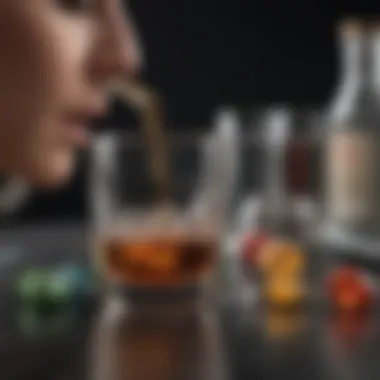
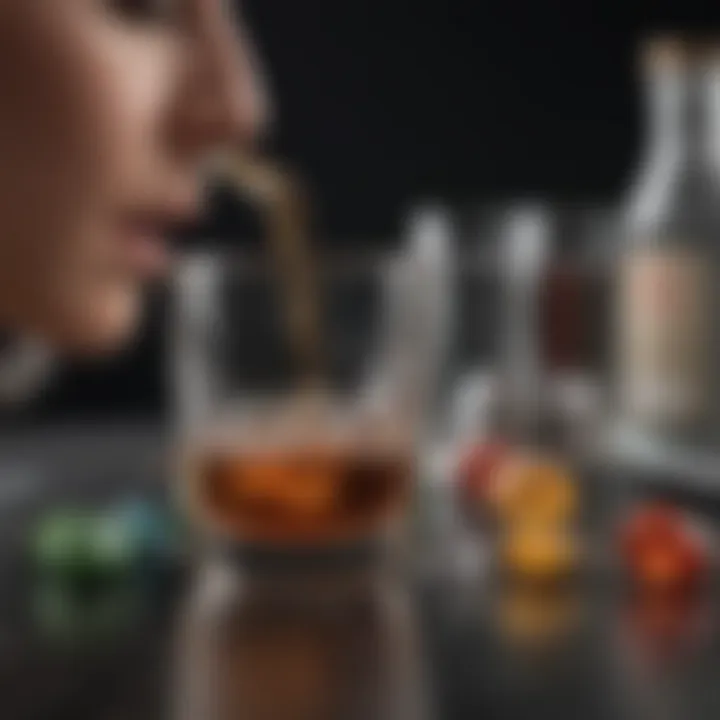
Each of these agents offers distinct mechanisms and benefits, and their choice will largely depend on individual treatment goals.
Mechanisms of Action
Understanding how these medications operate can shed light on their effectiveness. Here's more on how the most commonly prescribed drugs work:
- Naltrexone: By blocking the brain's opioid receptors, naltrexone can diminish the euphoric sensations associated with alcohol consumption. This approach not only curbs cravings but can also reduce the likelihood of relapse. Its effectiveness has been well-documented, and many studies underline its role in alcohol dependence treatments.
- Acamprosate: This medication works primarily by modulating glutamate transmission in the brain. Alcohol disrupts this balance, which can lead to increased cravings. Acamprosate helps maintain a more stable neurochemical environment during recovery, thus helping patients resist the urge to drink.
- Disulfiram: This drug interferes with the metabolism of alcohol. When someone drinks while on disulfiram, they often experience symptoms like flushing, nausea, and palpitations. This unpleasant experience functions as a powerful reminder of the effects of alcohol, promoting abstinence.
Pharmacological interventions play an imperative role in the ongoing battle against alcohol dependence. The combination of medication and therapy can pave the road to recovery, highlighting the importance of a comprehensive approach in addressing alcohol cravings.
Common Medications for Alcohol Cravings
Understanding the common medications utilized in managing alcohol cravings is pivotal in grasping the broader context of pharmacological interventions for alcohol use disorders. These medications play an essential role in treatment by not just curbing the immediate urges associated with excessive drinking but also addressing the underlying neurological pathways involved. This section highlights specific medications like Naltrexone, Acamprosate, and Disulfiram, providing insights into their characteristics, benefits, and patient considerations.
Naltrexone
Dosage Recommendations
When it comes to Naltrexone, dosing becomes a fundamental aspect that helps in optimizing its effect. Typically, the starting dose is 50 mg per day, but some patients may require adjustments based on individual response and tolerability. This adaptability allows healthcare providers to customize the treatment, potentially enhancing its effectiveness for different individuals. One standout feature of Naltrexone dosage is its once-daily regimen, making it a convenient option for patients who might struggle with adhering to complex schedules. However, it's worth noting that upon discontinuation, cravings might rebound, an important factor to consider for both practitioners and patients.
Efficacy Studies
Efficacy studies surrounding Naltrexone have showcased its ability to significantly reduce the frequency of relapse in patients consuming alcohol. Research highlights that this medication can decrease cravings and improve overall treatment retention. The significance of these studies cannot be overstated since they provide a critical evidence base for its inclusion in treatment protocols. A unique aspect of Naltrexone is its dual action; it can reduce the pleasurable effects of alcohol which is beneficial in breaking the cycle of addiction. However, some studies note variability in response, indicating that it may not work for everyone, and thus, routine monitoring is necessary.
Potential Side Effects
Potential side effects linked to Naltrexone might range from gastrointestinal disturbances to liver enzyme alterations. It's a crucial aspect as understanding these side effects informs the decision-making process when prescribing. For instance, while many patients tolerate Naltrexone well, some may report nausea or fatigue, which could deter usage, leading to discontinuation. Highlighting these side effects plays a key role in setting realistic expectations for patients regarding treatment.
Acamprosate
Mechanism of Action
Acamprosate works primarily by stabilizing chemical signaling in the brain that usually gets disturbed in individuals with alcohol dependency. It enhances GABAergic neurotransmission while inhibiting glutamate activity. This mechanism is significant because it provides a theoretical foundation for reducing cravings and withdrawal symptoms effectively. A notable feature of Acamprosate is its sustained action; it is often taken three times daily, reinforcing its continuous support in craving management.
Clinical Trials
Clinical trials have affirmed Acamprosate's efficacy in maintaining abstinence from alcohol, particularly in individuals who have already detoxified. In these studies, it was shown to help extend periods of sobriety significantly. The replies during these trials underline its role in a comprehensive treatment approach, allowing healthcare professionals to advocate for its use confidently. Nevertheless, the trials also point out that a consistent commitment from the patient is vital, making patient education a crucial component of successful intervention.
Patient Considerations
When considering Acamprosate, it’s essential to understand aspects like renal function since dosage adjustments may be necessary in patients with impaired kidney function. This unique consideration makes it less universally applicable than other medications. Thus, screening and ongoing patient evaluations are key during its administration. A strength of Acamprosate lies in its favorable side effect profile, often leading to good patient tolerability, further supporting its dedication in treatment plans.
Disulfiram
How It Works
Disulfiram functions by inhibiting the enzyme acetaldehyde dehydrogenase, leading to unpleasant symptoms when alcohol is consumed. This mechanism creates a strong deterrent against drinking, which is particularly beneficial for individuals who might require a sharp incentive to avoid alcohol. Disulfiram’s unique approach establishes a negative reinforcement mechanism, steering patients away from potential relapse. However, patient adherence is vital, as its effectiveness hinges on the patient's willingness to comply with prescribed usage.
Impact on Drinking Behavior
The impact of Disulfiram on drinking behavior can be significant; research supports its ability to reduce the likelihood of drinking after its administration begins. Patients often report a strong commitment to abstaining as the fear of adverse reactions can be quite motivating. This characteristic makes it a noteworthy option, particularly for individuals with a history of willful relapse. Nonetheless, careful selection of candidates is crucial, as its effectiveness dramatically depends on the mutual understanding between the patient and healthcare provider about the importance of abstaining from alcohol.
Adverse Reactions
Adverse reactions to Disulfiram can range from mild to severe, with some patients experiencing symptoms that include flushing, palpitations, and even hypotension, primarily when alcohol is consumed. Highlighting these risks is essential for informed consent and ensuring patient accountability. The unique feature of Disulfiram lies in its legal implications as well; experienced practitioners often witness favorable outcomes when the treatment is closely monitored. However, these potential adverse reactions warrant discussions about the importance of strictly adhering to guidelines and understanding one's own limitations.
Ultimately, the role of medications in mitigating alcohol cravings is crucial, but contextualizing their usage within broader treatment strategies is paramount. This ensures that each patient receives personalized care tailored to their needs.
Integrating Medication with Therapy
When tackling alcohol cravings, the synergy between pharmacological interventions and therapeutic approaches stands out as a critical piece of the puzzle. Medications alone might alleviate symptoms but integrating them with therapy can create a more robust framework for long-term recovery. This combination addresses not just the physiological aspects of cravings but dives into the psychological and social facets too.
By harmonizing medication treatment with behavioral therapies—like cognitive-behavioral therapy (CBT) or motivational interviewing—the patient gets a multifaceted strategy that cultivates healthier coping mechanisms. This dual approach allows individuals to process their cravings constructively while also equipping them with tools to handle stressors, thus reducing the temptation to relapse.
Behavioral Therapy Compatibility
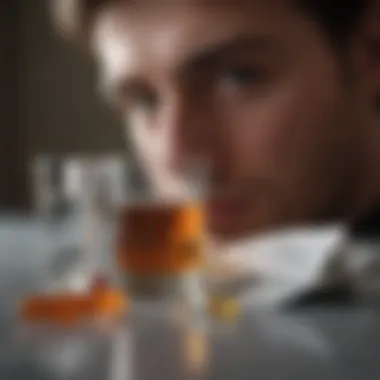
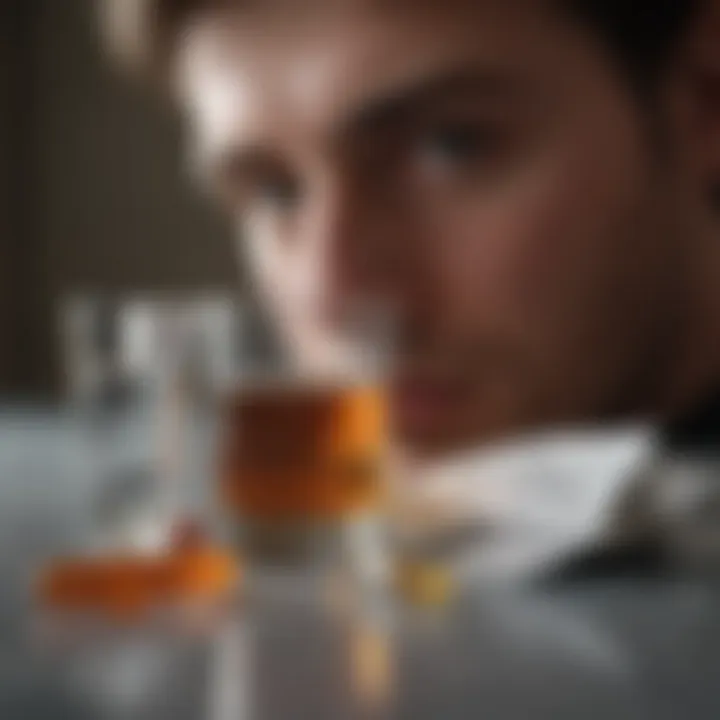
The intersection between medications and behavioral therapy can't be understated. While medications such as Naltrexone or Acamprosate can adjust neurochemical imbalances, behavioral therapies draw out underlying triggers and emotional responses associated with alcohol use. For instance, a patient on Acamprosate, which regulates glutamate transmission, may benefit from therapy sessions that address triggers—those red flags in their environment or relationships that spark cravings.
Studies have indicated that combining medication with behavioral therapy increases the chances of staying sober. When pharmacological treatments are framed within a therapeutic context, it’s like having a road map and a compass—medications provide direction, while therapy helps navigate the journey.
"A solo path may seem straightforward, but often, it’s the combined strides that lead to lasting recovery."
Role of Support Groups
Support groups, while often overlooked, play a paramount role in the integration of medication and therapy. Groups such as Alcoholics Anonymous or other community support systems provide an external buffer against cravings and relapses. They offer a platform for sharing experiences and strategies, fostering a sense of belonging that can be incredibly healing.
Incorporating medication into this framework can happen seamlessly. Many individuals find that discussing their experiences with medication—its effects and side effects—within a group creates a sense of shared understanding. This community can serve as a safety net, reinforcing the importance of sticking to both medication and therapy.
Furthermore, support groups can help individuals practice new coping strategies introduced during therapy and encourage adherence to medication regimens. When people witness others successfully balancing medication with support, the motivation to persist increases significantly.
Considerations for Mixed Treatments
When tackling alcohol cravings, understanding mixed treatments can make all the difference. These strategies combine pharmacological options with other types of therapy to create a holistic approach to recovery. This section digs into some pressing aspects of mixed treatments, their benefits, and why they are crucial in tackling alcohol use disorders.
Potential Interactions
One of the foremost considerations in mixed treatments is acknowledging potential interactions. Not all medications and therapies play nicely together, so it’s vital to map out how different components of a treatment plan interact. For instance, if a patient is on naltrexone and also undergoing psychotherapy that includes certain mood stabilizers, the effectiveness of either therapy can be compromised. Additionally, factors such as age, metabolic rate, and existing health conditions can influence how well a patient responds to medications.
- Common interaction concerns include:
- Medication-therapy dynamics: Certain behavioral therapies might work at cross purposes with pharmacological interventions.
- Physical health considerations: Individuals with liver concerns may need tailored treatment owing to how alcohol and certain medications are processed.
- Mental health factors: Drugs prescribed for comorbid mental health issues can sometimes thwart the action of anti-craving medications.
Understanding these interactions helps healthcare providers craft a comprehensive treatment plan that respects these nuances, thereby enhancing patient safety and improving overall efficacy.
Personalized Treatment Approaches
Each individual is a universe of their own, particularly when it comes to treating alcohol cravings. That's why personalized treatment approaches cannot be overlooked. The cookie-cutter method simply doesn’t do it anymore. Tailoring treatments to fit the unique make-up of a patient improves both adherence and outcomes.
A few aspects of personalization include:
- Lifestyle Factors: Distinguishing between a social drinker and someone with a severe dependency demands different approaches; treatment should reflect this.
- Genetic Profiling: Some individuals process alcohol and medications differently due to genetic variations. Research is ongoing, but a clearer profile can guide specific pharmacological choices.
- Comorbid Conditions: Patients with underlying mental health issues may require adjunct therapies to address anxiety or depression adequately alongside cravings. Tailoring the treatment to include all facets of well-being is essential.
By accommodating for unique circumstances and recognizing the need for several layers of intervention, personalized treatment approaches can truly elevate a patient’s chance of long-term recovery. In essence, it’s about fitting the right key into the right lock, ensuring that the approach caters not just to the cravings for alcohol, but to the whole individual.
Best Practices:
- Regularly monitor and adjust the treatment plan.
- Encourage open communication about any side effects or concerns.
- Collaborate with multidisciplinary teams, including therapists and doctors.
In the end, successful management of alcohol cravings pivots on an understanding of these mixed treatment considerations. It’s about ensuring that every avenue is explored — pharmacological, therapeutic, and personal — to facilitate the best possible outcomes.
Challenges in Medication Efficacy
Navigating the turbulent waters of alcohol craving treatment, especially through pharmacological means, often raises questions about the effectiveness of these medications. This section serves to highlight the critical challenges in determining how well these drugs work for different individuals. Factors affecting medication efficacy range from biological differences to behavioral concerns. Understanding these intricacies is paramount for both healthcare professionals and patients.
Variability Among Individuals
One of the significant hurdles in achieving satisfactory outcomes with alcohol craving medications is the variability among individuals. Everyone's brain and body chemistry operates on a unique spectrum. Factors like genetics can heavily influence how a medication is metabolized and, consequently, its effectiveness. For instance, two individuals prescribed Naltrexone may experience drastically different results based on genetic variations in opioid receptor function.
Moreover, personal circumstances, including psychological profile and lifestyle choices, can impact treatment effectiveness. Someone undergoing high-stress situations may find that medication alone isn’t enough to curb their cravings, as the broader context of their life can amplify or diminish the drug's effects.
It's also notable that comorbid conditions—such as anxiety or depression—often complicate pharmacological treatment. Thus, it’s crucial for healthcare providers to assess each patient holistically to tailor individualized treatment plans that may combine medication with behavioral interventions.
Compliance and Adherence Issues
Even when medications are prescribed with the best intent, adherence remains a formidable challenge. Many patients may start a treatment regimen with enthusiasm but soon find themselves falling off the wagon. Factors contributing to non-compliance can range from forgetfulness to adverse effects and even to perceptions of ineffectiveness.
In practical terms, some people might genuinely dislike taking daily pills, resulting in inconsistent usage. This inconsistency can lead to not just suboptimal results, but also a sense of hopelessness. A study published in the journal Alcoholism: Clinical and Experimental Research suggested that about 50% of those in treatment for alcohol dependence stop taking their medication within months. This statistic underscores the critical need to address adherence through supportive measures.
Healthcare professionals need to delve into patients’ worlds—understanding their routines, concerns, and preferences. Support groups, counseling, and regular follow-up appointments can bolster a patient’s commitment to a treatment plan. In doing this, they can help turn medication into a viable part of a broader strategy against alcohol cravings, increasing the chances of successful outcomes.
"The best treatment strategies recognize the diverse needs of individuals, adjusting along the way based on feedback and results. Adherence is a dynamic process, not a static one."
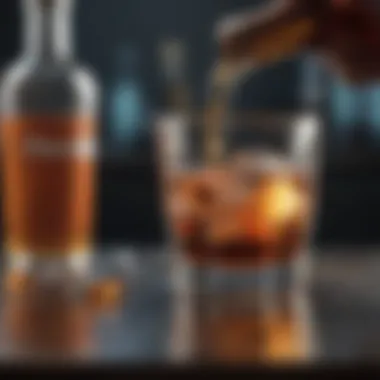
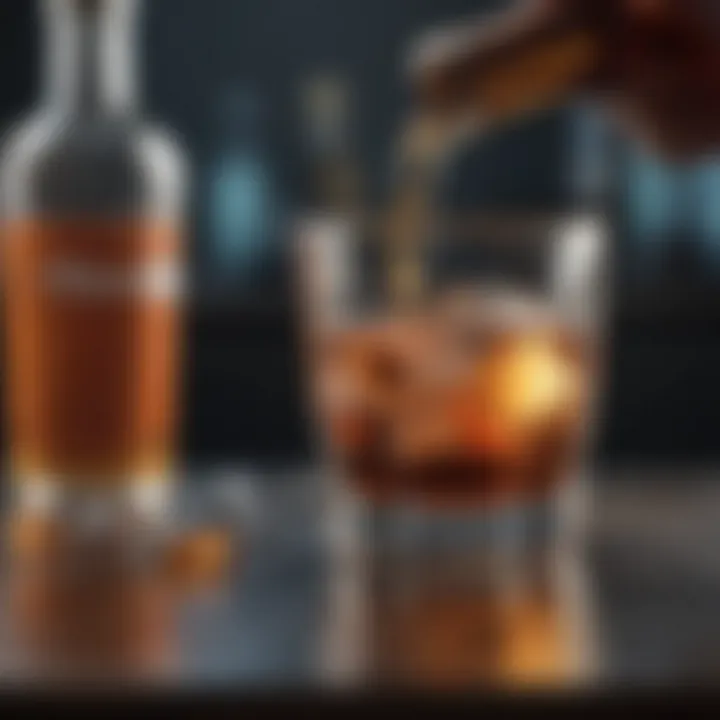
Research Insights and Future Directions
Recent findings underscore the growing recognition that individualized treatment strategies can significantly improve recovery outcomes. One important facet is understanding how different populations respond to various medications. For instance, genetic variations may influence how effectively a particular drug reduces cravings.
"Research indicates that the future of alcohol craving management likely lies in personalized therapies that account for individual biological, psychological, and social environments."
Recent Clinical Trials
Recent clinical trials provide a wealth of data, reflecting both successes and challenges in using pharmacological agents to treat alcohol cravings. For example, studies investigating the efficacy of potential adjunctive therapies have shown promise. Trials focusing on compounds like topiramate, which is primarily an anticonvulsant, have indicated their potential in reducing cravings and consumption levels among patients.
Moreover, advancements in methodology are catching the attention of researchers. Some recent trials utilize innovative imaging techniques to better understand the brain's response to different medications. By examining how these drugs interact with neural pathways associated with reward and addiction, researchers can tailor future therapies more effectively.
- Highlights from recent trials include:
- A multi-center trial assessing the effects of naltrexone on heavy drinkers, showing significant reductions in alcohol consumption.
- An exploration of acamprosate in combination with behavioral therapies, suggesting enhanced outcomes via a dual approach.
- Emerging data on disulfiram’s impact when integrated with long-term care strategies, indicating a potential increase in adherence.
Emerging Treatments
Emerging treatments represent a promising frontier in pharmacological strategies against alcohol cravings. With continual research, new compounds are being explored for their potential benefits. One particularly intriguing area involves the assessment of neurobiological agents that might optimize craving management. Drugs that target different neuroreceptors in the brain, such as the glutamatergic systems, are gaining traction. These agents hold potential for modulating neurotransmitter levels that play pivotal roles in cravings and relapse behaviors.
Other alternative treatments, like ketamine and its derivatives, are also under investigation for their rapid onset of action in alleviating cravings. This could potentially change the game for how quickly interventions can take effect for individuals suffering from Alcohol Use Disorders.
- Considerations for emerging treatments include:
- The balance of addressing cravings while minimizing side effects is still a significant hurdle.
- Key ethical discussions surrounding the prescription of these new therapies need to be addressed, especially in terms of accessibility and societal implications.
- The integration of behavioral therapies with these new pharmacological approaches could amplify effectiveness, making treatment more holistic.
Societal and Ethical Considerations
Understanding the societal and ethical landscape around alcohol cravings and their management is crucial. These elements shape the overall effectiveness of treatment and impact the lives of individuals struggling with alcohol use disorders. Addressing stigma, access to treatment options, and the broader implications of pharmacological approaches can inform policy-making and improve intervention strategies.
Stigma Surrounding Alcohol Use Disorders
The stigma associated with alcohol use disorders often leads to negative perceptions about those affected. This societal bias can manifest in various ways, from derogatory language to exclusion from social activities, which further alienates individuals in need of help.
For instance, consider a professional who faces judgment from colleagues when seeking treatment. This pressure may discourage them from accessing support, fearing the fallout on their career. Moreover, the widespread belief that addiction solely results from a lack of willpower can perpetuate harmful stereotypes.
This stigma not only harms individuals but also affects public health initiatives. When people are hesitant to seek help, or are misinformed about treatment options, it limits the effectiveness of programs aimed at reducing alcohol cravings.
To combat this stigma, community education is essential. Understanding that addiction is a complex disease influenced by genetic, psychological, and social factors can foster a more supportive environment. Outreach programs that promote a narrative of empathy and understanding over judgment can effectively reduce stigma.
"The greatest barrier to treatment is often not the lack of resources, but the pervasive stigma that shrouds the disease of addiction."
Access to Treatment Options
Access to varied treatment options remains a significant concern in the management of alcohol cravings. While some individuals might have the means to seek out specialized care, many find themselves hindered by financial constraints or geographical limitations.
Consider the case of a rural community where the nearest treatment facility is a few hours away. Individuals in such environments might feel trapped, with limited resources or options that do not align with their needs. In contrast, urban areas may offer a multitude of services, yet those with lower socio-economic status might still struggle to access these options due to costs or lack of insurance.
Advocacy for universal access to treatment options is crucial. Policymakers need to address disparities in health care accessibility, ensuring that effective pharmacological interventions are available to all, regardless of their background. Expanding telemedicine and online support groups can also bridge gaps for those unable to attend in-person facilities.
In summary, the societal and ethical considerations surrounding alcohol cravings highlight an urgent need for a shift in perception and policy. By confronting stigma and improving access to treatment, we can foster an environment where individuals feel supported in their journey toward recovery.
Epilogue
The exploration of pharmacological approaches to mitigate alcohol cravings highlights a multifaceted challenge that intertwines medicine, psychology, and societal perceptions. Alcohol use disorders affect millions globally, making the importance of effective interventions more critical than ever. Medications like Naltrexone, Acamprosate, and Disulfiram serve as vital tools in reining in cravings, helping individuals take the first steps toward recovery.
Summary of Key Points
In summary, the key points that emerge throughout this article include:
- Understanding Alcohol Cravings: Grasping what drives these cravings is essential to formulating effective treatment strategies. Psychological and physiological factors both play a significant role in how cravings manifest.
- Pharmacological Interventions: Medications for treating alcohol cravings have distinct mechanisms of action that interact with brain chemistry to reduce the desire to drink. Each drug comes with its own set of research-backed efficacy and potential side effects.
- Integration with Therapy: Medication is not a standalone solution. The synergy of pharmacological treatments with behavioral therapies and support groups is crucial for long-lasting recovery.
- Challenges to Efficacy: Individual variability presents a challenge: what works for one person may not for another. Compliance and adherence to prescribed treatment regimens are also significant factors that can impact success rates.
The Importance of Comprehensive Care
Comprehensive care transcends mere medication prescriptions. It incorporates the understanding that addiction is not solely a medical issue but also a psychological and social one. Addressing these interconnected aspects enhances the likelihood of recovery. Here are some considerations:
- Holistic Treatment Approaches: A blend of medication, therapy, lifestyle modifications, and support networks ensures a well-rounded treatment plan. Each element plays a role in sustaining recovery.
- Stigma and Accessibility: Reducing stigma around alcohol use disorders helps create more avenues for individuals seeking help. Additionally, making treatment accessible is paramount in encouraging individuals to seek help.
- Personalized Treatment Plans: Tailoring treatment plans to individual needs ensures a higher chance of adherence and success, as not everyone will benefit from the same approach.
"The path to recovery can be winding, but with comprehensive care, it is navigable."
In a nutshell, while pharmacological aids are vital in curbing alcohol cravings, they must be part of a larger, more comprehensive strategy focusing on the individual’s full experience and needs. Achieving success in tackling alcohol cravings requires persistence, understanding, and, above all, a commitment to holistic care.



